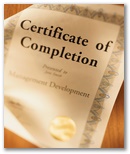Workers' Compensation Claims
Get help with workplace injury-related processes and the Stay-at-Work/Return-to-Work program!
The Workers Compensation Act requires an employer to immediately report all serious injuries and fatalities. This is done by contacting the WorkSafeBC Prevention Emergency Line at 604 276-3301 in the Lower Mainland or toll free at 1 888 621-7233.
As an employer, you are also responsible for reporting other types of injuries or incidents on the Employer’s Report of Injury or Occupational Disease (Form 7) within three days of their occurrence to WorkSafeBC.
The following situations must be reported to WorkSafeBC:
- The worker loses consciousness following the injury
- The worker is transported to a hospital or other place of medical treatment
- The injury requires medical treatment
- The worker states an intention to seek medical treatment
- The worker has received medical treatment
- The worker is unable to return to his or her work subsequent to the day of injury
- The injury or accident resulted in the breakage of an artificial member, eyeglasses, dentures, or a hearing aid
- The worker or WorkSafeBC has requested that an employer’s report be submitted
Investigating After an Injury or Near Miss
The Workers Compensation Act requires the employer to investigate and report all incidents which cause injury or have the potential to cause serious injury.
An accident/incident investigation should address questions pertaining to who was involved, what happened, where and how the accident or incident occurred, when it happened, and why work is believed to be the cause. Witnesses must also be identified.
For more information about accidents or incident reporting and the required two-step investigation process, please see Accident/Incident Investigations .
Claims Management
The term "claims management" refers to the process of managing a worker’s compensation claim, which begins with the filing of the initial documentation to report a worker's injury or illness.
For employers, managing claims includes the establishment of reporting procedures, reviewing the legitimacy of the claim, overseeing a worker’s subsequent treatment, facilitating safe return to work when possible, and ultimately ensuring the resolution of the claim.
In order to effectively manage a claim, employers, managers, supervisors, and workers should have an understanding of the workers’ compensation system, good claims management practices and effective return to work strategies.
For further information about claims management and the benefits of an effective program, consider attending one of our complimentary claims management seminars.
Life of a WorkSafeBC Claim
If your worker is injured on the job or suffers from a work-related illness, the injury or illness must be reported to WorkSafeBC. It is against the law for an employer to tell a worker not to report an injury or illness to WorkSafeBC.
When a claim has been established with WorkSafeBC, the injured worker will receive a claim number. With this number, you can check the status of a claim online. You can also check a claim’s status by phoning the WorkSafeBC Claims Call Centre. For privacy reasons, personal information about the worker is not accessible by employers.
During the life of a claim, you may receive the following types of decision letters from WorkSafeBC:
- Acceptance of the claim
- Initial wage rate – sets the wage rate upon which benefits are to be based for the first 10 weeks of the claim
- Long-term wage rate – sets the wage rage upon which benefits are to be based beyond the first 10 weeks of the claim
- Termination of wage loss benefits – determines when wage loss benefits will cease
- Relief of Costs – establishes whether a worker’s pre-existing medical condition is responsible for prolonging the duration of the claim and, if so, the percentage of cost relief available to you
- Compensable Consequence – determines whether a subsequent injury arose as a consequence of the initial injury
- Permanent Disability Award - determines whether the worker’s condition will be permanent
- Vocational Rehabilitation – determines whether the worker is able to return to the pre-injury job, or whether modified work or other accommodation is required
- Re-openings – establishes when a previously terminated claim is re-opened due to a recurrence or deterioration of the injury
For information about disputing a claims decision, see Disputing a Decision on a Claim.
Stay-at-Work/Return-to-Work
A Stay-at-Work/Return-to-Work Program is a proactive way for you to assist your injured worker to stay at work or return to productive and safe employment as soon as physically possible.
A Stay-at-Work/Return-to-Work Program is based on the philosophy that many injured workers can perform productive work safely during the recovery process. Remaining at work or returning to appropriate work duties is seen as part of the worker’s physical therapy. In fact, medical studies indicate that some physical and mental activity early in the healing process will actually speed recovery.
To be effective, a Stay-at-Work/Return-to-Work Program should be initiated when your worker first reports an illness or injury to you. An early intervention assessment can be used to determine if your worker is capable of staying at work performing regular, modified or alternate duties while recovery occurs.
An effective Stay-at-Work/Return-to-Work Program can provide your injured workers with a safe and timely transition back to their regular work duties.
For further information about Stay-at-Work/Return-to-Work Programs, consider attending one of our complimentary claims management seminars.
Disclosure of the Claim File
If you are involved in the review or appeal of a claim decision, you will receive a copy of your worker’s WorkSafeBC claim file. This information will include communications between WorkSafeBC officers and the worker, physicians and other medical practitioners, and you, in addition to forms and medical reports. Certain personal information, such as medical history unrelated to the claim, will not be disclosed.
Law and Policy
Register for a Free Seminar near you!
Here's how to reach the Employers' Advisers Office.


